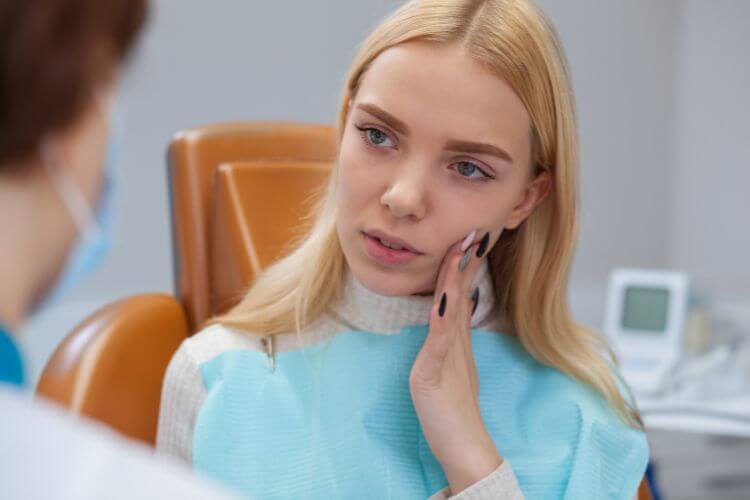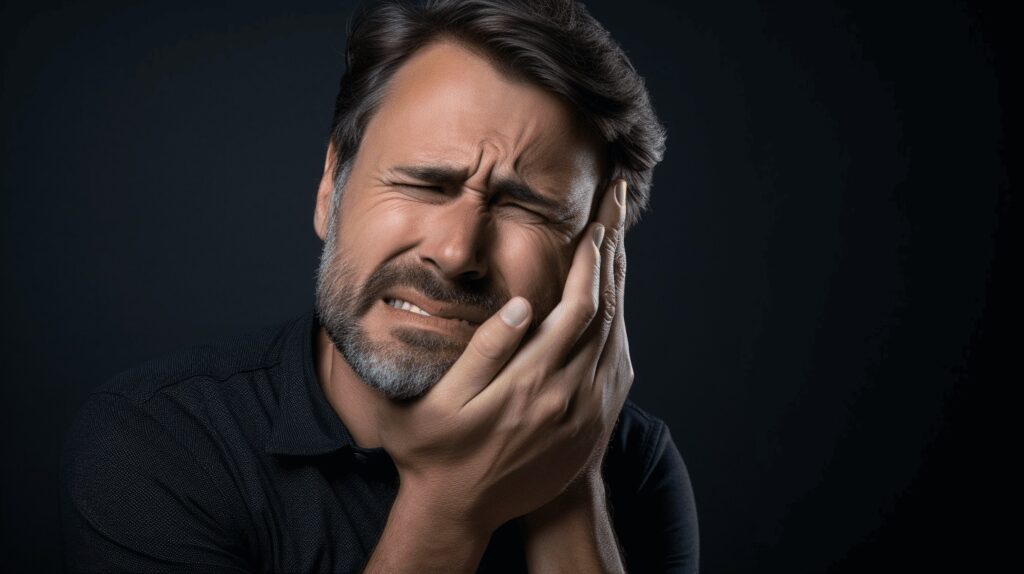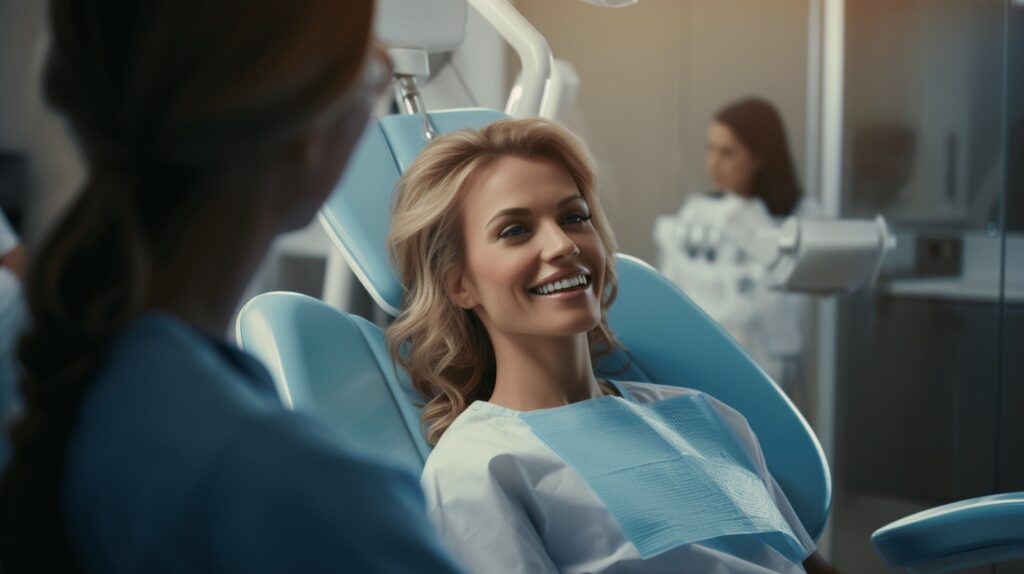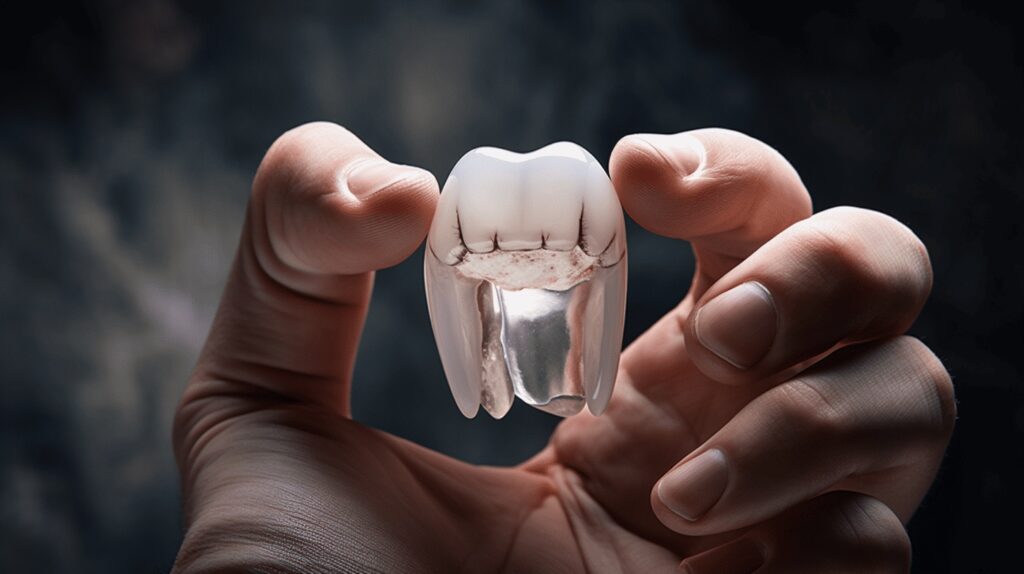Welcome to our exploration into the crucial world of emergency dental care.
Many a time, dental pain has been dismissed as trivial or something to be ‘dealt with later.’ However, this attitude has seen a drastic shift in the recent years due to increasing awareness.
Contrary to popular belief, dental emergencies are a significant public health issue that profoundly impact our everyday lives, from disrupting work productivity to causing students to miss school. Over time, these issues culminate into a significant strain on our healthcare systems, often resulting in extraneous hospital visits and admissions.
🚨So, buckle up! Because we’re about to delve deep into the various aspects of dental emergencies beginning with insightful statistics, their impact on productivity and school hours, the pattern of re-visitations to the emergency department, as well as visits and hospital admissions for preventable conditions.
We’ll also shed light on dental emergencies among American adults. Our goal is not just to throw numbers at you, but to emphasize the size of the problem we’re dealing with, in order to encourage immediate and effective solutions.
So, are you ready to dive in? Let’s take this enlightening journey together.🦷
Table of Contents
Statistics of Dental-Related Emergency Department Visits
Keeping our dental health in tip-top shape is crucial; still, sometimes, no matter how diligent we are, dental emergencies can spring up when we least expect them. Understanding the statistics of dental-related emergency department (ED) visits can help us prepare for and know what to expect if we ever find ourselves in such a predicament.
General Statistics
Firstly, let’s dip our toes into the overall picture of dental-related ED visits. Based on data, it becomes quite evident that dental problems are far from rare in emergency rooms. In 2018 alone, over 2 million such cases were reported across the U.S. That’s a staggering number, isn’t it? 🤯 That equates to quite a significant portion of overall medical emergencies.
Non-Traumatic Dental Problems
But here’s where things get even more interesting. A considerable chunk of these ED visits is due to non-traumatic dental problems. They form a full 1.5% of all ED visits. Yes, you read it right. These are cases that are not the result of an injury or a sudden accident, but instead, stem from gradual issues like tooth decay or a slow-progressing infection. It just shows how these seemingly minor issues can escalate if not taken seriously! 😮
Atraumatic Dental Pain
At the top of the list of non-traumatic dental problems leading people to the ED is atraumatic dental pain. This type of pain alone is responsible for 1.8% of all ED visits, costing a whopping $2.4 billion annually. It’s clear as day that this pain is not just a nuisance but a significant pull on healthcare resources. 😥
So, from these statistics, we can safely conclude that taking satisfactory care of our dental health isn’t just advantageous for our own well-being, but also beneficial to the broader health care system. It’s perhaps an excellent reminder that our smiles’ maintenance should be our priority not only for aesthetic reasons but for the sake of holistic health. 😄
Impact on Productivity and School Hours
You might be amazed at the ripple effects that a painful toothache can cause. Not only do dental problems lead to discomfort, but they also disrupt our schedules significantly. This inconvenience can affect both school hours as well as productivity at workplaces. Let’s dive in and uncover some of the startling statistics and impacts.
Dental emergencies at school can cause a considerable disturbance in a child’s education. On average, 34 million school hours are lost annually because of emergency dental care. Imagine yourself as a child experiencing a sudden toothache during a crucial math class. Ouch! 😢 The pain can cause difficulty in focusing and retaining what’s being taught.
Moreover, the loss isn’t confined only within the school premises. In professional life, dental issues also carry a hefty price tag. Over $45 billion in U.S productivity is lost each year due to unscheduled dental emergencies. This could mean missing a critical business meeting or a career-changing opportunity due to an unanticipated root canal treatment.
These statistics put into perspective the importance of periodical dental check-ups and the adoption of solid oral hygiene habits from an early age. By doing so, we can contribute significantly toward reducing these losses, both academically and professionally.
So let’s embrace a healthier dental routine, shall we? Let it not just be about a picture-perfect smile, but also about keeping these unexpected intrusions at bay. Remember, a small effort now can save us from a whole lot of pain, interruption, and cost further down the line. 😁👍
Keep smiling, keep shining, and most importantly, keep those pearly whites healthy!
Revisiting the Emergency Department
Life in the emergency department often moves at breakneck speed, where emergency physicians and staff work tirelessly to provide the best possible care to patients. While the team celebrates the recovery and discharge of these patients, occasionally, some of them do have to return to the ER, a situation we would all prefer to avoid. In this section, we’ll uncover the statistics concerning ER revisits, focusing primarily on dental emergencies among adults and children.
Adult Revisits
Isn’t it surprising that a whopping 1.7% of adult emergencies related to dental woes culminate in a second trip to the ER within just 15 days? Undeniably, this statistic shines a light on an area of healthcare where improvements can be made. 😱
To comprehend this better, let’s imagine a room full of 100 emergency dental patients. As per our statistics, at least one (to almost two) of these patients will wind their way back to the ER 🚑 within a fortnight. The reasons for these revisits could range from complications, ineffective treatment, or underlying medical issues that weren’t apparent during the first visit.
Here’s where we step in. With a focus on thorough assessment, comprehensive treatment plans, and robust patient education measures, we aim to minimize the chances of an emergency revisit. Our goal is to not only treat the immediate malady but also ensure our patients receive holistic, long-term care. 💪
Child Revisits
Watching your child in pain is heart-wrenching. So much so, an ER for dental issues related to your little ones is a place you’d want to visit as infrequently as possible. Thankfully, our statistics paint a less alarming picture here, with just 0.6% of children revisiting the ER for dental conditions.
To put that into perspective, if we had to line up 100 ER cases involving pediatric dental emergencies, less than one of these young patients would have to bear the ordeal of a second ER visit within 15 days. Nevertheless, this statistic, though relatively low, is still not ignored. 👶💔
At the heart of our pediatric care approach lies a commitment to offering an exhaustive management of dental emergencies that include diligent follow-up mechanisms. An ER revisit, especially for a child, signifies an opportunity to improve and refine our protocols.
In a nutshell, we adopt a streamlined, patient-loving approach that lends significant importance to the initial care, thereby reducing the likelihood of ER revisits—because, as they say, “prevention is better than cure.” 💖
Emergency Room Visits for Preventable Dental Conditions
A simple toothache flaring into an unbearable ordeal might seem like a sudden incident, but more often than not, it indicates a neglect of oral health maintained over a protracted period. These seemingly small issues can manifest into severe problems, leading to a rise in emergency room visits for preventable dental conditions annually, accounting for nearly 1.15% and 2.5% of all ER visits. 😱
Recurrent dental emergencies often become a persistent problem, particularly when individuals find themselves in the emergency room for issues that could have been circumvented with routine dental care.
So, what can be done to curb these increasingly frequent hospital visits? The answer lies in the notion of preventative dentistry. 🦷
Let’s look at how focusing on preventative dental care can reduce the incidence of these unforeseen and avoidable dental emergencies:
- Consistent Oral Hygiene Practices: This involves the very basics of brushing twice a day and flossing regularly. While these practices may appear trivial, they go a long way in preventing plaque buildup and warding off gum disease or tooth decay that could lead to a dental crisis.
- Regular Dental Check-ups: Routine dental check-ups are vital in detecting early signs of dental problems. Early intervention can circumvent the escalation of dental issues that would otherwise result in an emergency visit to the hospital.
- Balanced Diet: Consuming a balanced diet rich in vitamins and minerals contributes significantly to strong and healthy teeth. This natural resistance against potential dental issues diminishes the propensity for dental emergencies.
“Prevention is better than cure.” This age-old proverb rings especially true when it concerns oral health. Adopting the practices highlighted in the Impact of Preventative Dentistry can act as a solid shield against those expensive and unexpected dental emergencies.
It is high time we shift our focus from reactive to proactive dental care. Remember, your smile isn’t merely about looks; it is a reflection of your oral health, and a little preventative action today can save you a distressing and costly dental emergency tomorrow. 😁
Hospital Admissions
The world of healthcare can sometimes feel like an infinitely complex web! Let’s take a moment to discuss one cog in that machine: hospital admissions. One common reason people land in hospitals is due to dental problems. Now, you may ask, “Dental issues? Those aren’t supposed to be that serious, right?” Well, unfortunately, that’s far from the truth.
From robust toothaches to infected oral cavities, dental-related visits to the emergency department (ED) are all too prevalent. However, it might surprise you to learn that only a tiny fraction of these visitors end up being admitted to the hospital. In fact, about 5% of dental-related ED visits resulted in hospital admission, begging the question – what happens to the remaining 95%? Let’s break that down.
- Here’s the good news: the vast majority – a whopping 95%, in fact – are treated and released! This shows that, in general, these dental emergencies weren’t serious enough to warrant prolonged hospitalization.
- However, this leaves 5% who had more severe conditions, leading to a hospital admission. This tiny percentage illustrates the importance of regular dental check-ups to prevent significant dental emergencies and the resultant hospitalization.
👉 One critical take-away here is the importance of preventative measures – a small issue today could snowball into a major problem tomorrow. Remember, an ounce of prevention is worth a pound of cure! Dental health is no exception to the rule.
So what can we learn from the surprisingly low percentage of hospital admissions after dental-related ED visits? One clear message emerges: keep up with your appointments, and don’t underestimate the importance of oral hygiene.
Remember, if you’re experiencing severe dental issues, don’t hesitate to seek help. Timely treatment can spare you from an unplanned trip to the ED and, potentially, an unwanted hospital stay! In the end, it’s all about keeping you healthy and smiling brightly! After all, isn’t that worth the extra tooth brushing time?
Dental Emergencies Among American Adults
Have you ever found yourself in a sudden situation where you’re clutching your mouth in agony because of a rogue toothache? You’re not alone. Dental emergencies are an unfortunate but common occurrence among American adults. In fact, did you know that nearly 12% of American adults have experienced a dental emergency at one point in their lives? 😲
The Crisis of Dental Emergencies
These unexpected dental discomforts often sideline people from their daily activities, affecting productivity and overall well-being. They typically happen when you least expect them, underlining the importance of staying aware and being prepared. 🆘
Contributing Factors
There are various factors that contribute to the prevalence of dental emergencies among this demographic. Here are a few:
- Improper dental care: Neglecting regular dental check-ups and poor oral hygiene can have serious repercussions.
- Unhealthy diet: Excessive consumption of sugary and acidic foods is damaging to oral health. For many Americans, fast food and soda have become staples in their diet, contributing to poor oral health.
- Tobacco use: Smoking or chewing tobacco deteriorates teeth and gums, increasing the risk of dental emergencies. 🚬
Ways to Prevent Dental Emergencies
Preventive measures are not just confined to good oral hygiene. They extend beyond that. Maintaining a balanced diet and making healthier lifestyle choices can go a long way in preventing dental emergencies. Here’s what we can do:
- Brush and floss regularly.
- Visit the dentist for routine check-ups.
- Limit sugary and acidic food intake.
- Avoid tobacco usage.
Remember, dental emergencies don’t announce their arrival. They surprise you. This is why it’s crucial to prioritize good oral health and make informed lifestyle choices to keep these unforeseen and painful situations at bay. Let’s help lower that 12% statistic and pave the way for a healthier, smile-filled America. 😄
Conclusion
We’ve reviewed the facts and figures concerning emergency dental care and its significant impact in the United States. Dental emergencies are a considerable concern and often result in a significant drain on resources that could have been better utilized for more critical cases. It’s noteworthy how non-traumatic dental problems and preventable dental conditions are leading to a significant number of emergency room visits.
As we’ve seen, these emergencies do not just affect health; they also have substantial economic implications due to the loss of productivity and school hours. Recurring visits to the emergency department underscore the need for timely and affordable dental care.
This is why at Wilshire Smile Studio, we’re committed to offering top-notch emergency dental care to our patients. Our team of experienced professionals aims to treat your dental emergencies swiftly and efficiently, helping to limit unnecessary hospital admissions and revisit to the emergency rooms.
We strive to make quality dental care accessible to all, mitigating the impact on your productivity and overall well-being. Welcome to a place where your dental health comes first. Reach out to us for any dental emergencies, and let’s give you the care and relief you need.
After all, a healthy, pain-free smile contributes to happier lives!
Book your free consultation with us online or call (323) DENTIST (323-336-8478) today.
Frequently Asked Questions
1. What are some common emergency dental concerns?
Common emergency dental concerns include toothaches, chipped or broken teeth, knocked-out teeth, abscesses, and soft tissue injuries.
2. When should I seek emergency dental care?
You should seek emergency dental care if you experience severe tooth pain, excessive bleeding, a knocked-out tooth, a broken or cracked tooth, or any other dental injury that requires immediate attention.
3. Can I go to the emergency room for a dental emergency?
While the emergency room can provide temporary relief and assistance for dental emergencies, they may not have specialized dental equipment and expertise. It is recommended to contact an emergency dentist for prompt and proper dental care.
4. How can I manage a toothache before seeing an emergency dentist?
To manage a toothache before seeing an emergency dentist, you can rinse your mouth with warm saltwater, use over-the-counter pain relievers, apply a cold compress to the affected area, and avoid chewing on that side of your mouth.
5. What should I do if my tooth gets knocked out?
If your tooth gets knocked out, gently rinse it with water without removing any attached tissue. Try to place it back in its socket, or if not possible, keep it in a container of milk or saliva. Seek immediate dental care as soon as possible.









